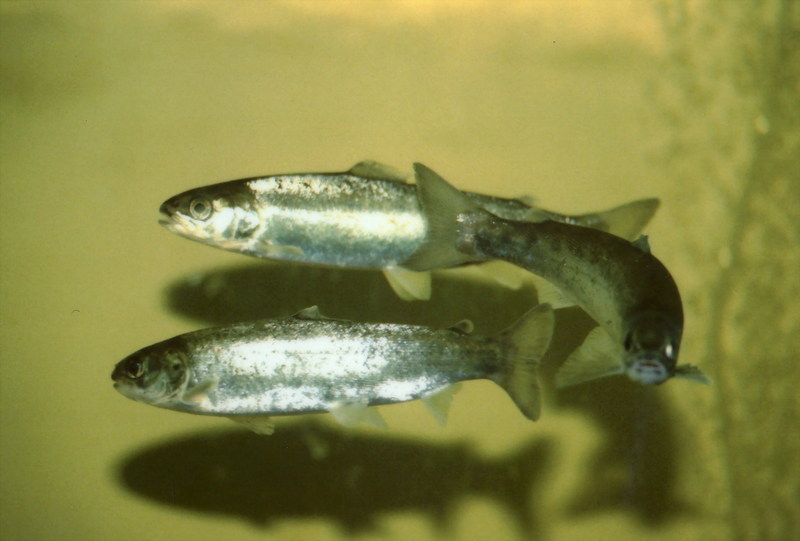ERROR : Server Busy(-1105)
ERROR : Server Busy(-1105)
Atlantic Salmon smolts (Salmo salar)
From the U.S. Fish and Wildlife Service's online digital media library.
Check http://images.fws.gov/ for higher quality version, and http://www.fws.gov/help/policies.html for copyright information.
Metadata
Title: Atlantic Salmon smolts
Alternative Title: (none)
Creator: Steenstra, Peter
Publisher: U.S. Fish and Wildlife Service
Contributor: NATIONAL CONSERVATION TRAINING CENTER-PUBLICATIONS AND TRAINING MATERIALS
Language: EN - ENGLISH
Rights: (public domain)
Audience: (general)
Subject: endangered species; fish; Green Lake National Fish Hatchery; Maine;
Description
Table Of Contents: Atlantic salmon spend the first two years of life in the fresh water habitats of their native stream (occasionally three, depending upon food availability). At two years of age, the fish undergo the process of smoltification, resulting in changes in certain cells of the gills and kidneys (allowing survival in either fresh or salt water), and brings about a silvery body color (better camouflage in the open ocean). Also during smoltification, salmon imprint upon the chemical "fingerprint" of their home river which allows them to recognize it upon their return from the sea.
Abstract: Once smoltification is complete, and water temperature increases to over 50o F, salmon smolts instinctively migrate downstream to the North Atlantic Ocean, and eventually to the cold waters off Greenland. Here they find food in the form of shrimp, herring and capelin, and two years later, at four, the survivors return to their home river to spawn. Unlike Pacific salmon, Atlantic salmon may repeat the spawning cycle several times. These smolts are from the Penobscot River in Maine. Digital image file, no higher resolution available.
Date
Available: October 28 2005
Issued: October 28 2005
Modified: October 28 2005 |

